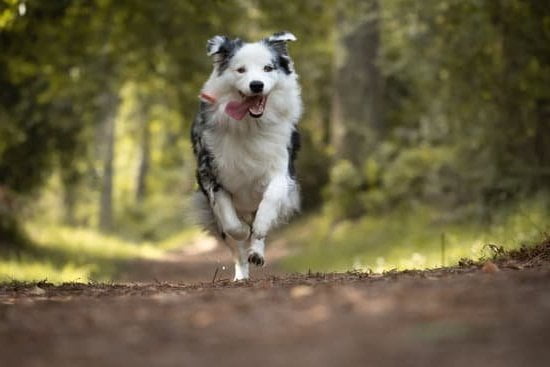Many dog owners often wonder whether their older canine companions are too old to be trained. There is a common belief that older dogs are more challenging and less capable of learning new behaviors compared to younger dogs. However, it is essential to understand that each dog is unique, and age should not be seen as a limiting factor when it comes to training.
In this article, we will delve into the perceived limitations of training older dogs and discuss why age should not define a dog’s training potential. We will explore the physical and cognitive changes that occur in dogs as they age, highlighting how these changes may affect their ability to learn new behaviors.
By providing scientific evidence and sharing success stories of older dogs who have thrived in obedience training, we aim to debunk the myth that dogs can’t be trained at any age.
It is important to approach training older dogs with patience, understanding, and adapted techniques. We will discuss effective strategies tailored for older dogs while emphasizing the need for consistency and persistence in achieving desired results. Additionally, we will provide readers with a checklist for assessing their dog’s individual abilities and health before embarking on a training journey.
Training an older dog can have numerous benefits beyond learning new behaviors. It provides mental stimulation, increased bond between owner and dog, and enhances the overall quality of life for both parties involved. By overcoming challenges through patience, consistency, and persistence, readers can unlock their older dog’s full potential.
So let us dive into the world of training senior canine friends with an open mind and dispel the notion that age limits a dog’s ability to learn. Together, we’ll explore how training can enhance our relationship with our furry companions regardless of their age.
Understanding Age-Related Factors in Dog Training
As dogs age, they undergo various physical and cognitive changes that can potentially affect their ability to learn new behaviors. It is important for dog owners and trainers to understand these age-related factors in order to optimize the training process for older dogs.
One of the key physical changes that occur in aging dogs is a decrease in sensory functions such as hearing and vision. This can make it more challenging for them to perceive and respond to commands or cues. Additionally, older dogs may experience joint pain or arthritis, which can limit their mobility and make certain movements uncomfortable or difficult. These physical limitations should be taken into consideration when designing a training program for an older dog.
Cognitive changes also play a role in the training abilities of older dogs. As they age, dogs may experience a decline in cognitive function, including memory loss and reduced problem-solving skills. This can affect their ability to retain information or remember previously learned commands. However, it is important to note that not all older dogs will experience significant cognitive decline, and individual variations should be considered when planning a training approach.
Understanding these age-related factors allows trainers to adapt their methods and techniques accordingly. For example, using visual cues or hand signals may be more effective than relying solely on verbal commands for an older dog with diminished hearing. Similarly, incorporating low-impact exercises into the training routine can help accommodate any physical limitations associated with aging.
By gaining a deeper understanding of the age-related factors that affect dog training, owners and trainers can better tailor their approaches and set realistic expectations for older dogs. Taking into account each dog’s individual capabilities and limitations is crucial in creating a successful training plan that promotes both learning and well-being.
| Age-Related Factors | Effects on Dog Training |
|---|---|
| Sensory Decline (e.g., hearing, vision) | Difficulty perceiving and responding to commands or cues |
| Joint pain or arthritis | Limitations in mobility and discomfort during certain movements |
| Cognitive decline (e.g., memory loss, reduced problem-solving skills) | Challenges in retaining information and remembering commands |
Debunking the Myth
Many pet owners believe that it is more difficult to train older dogs compared to their younger counterparts. However, this common belief is actually a myth. Scientific evidence supports the idea that age is not a limiting factor when it comes to training dogs. In fact, older dogs have shown great success in obedience training, proving that they can be trained at any age.
Studies have shown that older dogs possess the cognitive ability and capacity for learning comparable to younger dogs. While there may be physical and cognitive changes that occur as dogs age, these changes do not necessarily hinder their ability to learn new behaviors. By understanding these age-related factors and adapting training methods accordingly, older dogs can thrive in their training journey.
There are countless success stories of older dogs who have achieved remarkable results in obedience training. These stories serve as inspiration and proof that age alone does not determine a dog’s training potential. From senior rescue dogs mastering basic commands to elderly service dogs learning complex tasks, these achievements highlight the limitless possibilities for older dogs in the realm of training.
It is important to approach training older dogs with patience and understanding. While they may require adaptations in techniques and strategies, it is crucial not to underestimate their abilities or give up too easily. Remembering to focus on positive reinforcement, consistency, and persistence will go a long way in achieving desired results.
Importance of Adapted Training Methods
Training older dogs requires a different approach and the utilization of adapted training methods to accommodate their physical and cognitive changes. As dogs age, they may experience reduced mobility, decreased sensory perception, and potentially develop age-related conditions that could impact their learning abilities. In this section, we will discuss the importance of patience and understanding when training older dogs and explore techniques and strategies that are particularly effective for this specific group.
Patience and Understanding
It is crucial to approach training older dogs with patience and understanding. As they age, they might take longer to process information and physically execute commands. Frustration or impatience from the trainer can hinder the learning process. It is important to acknowledge their limitations and be compassionate during the training sessions.
Older dogs may also have physical discomfort or pain due to stiff joints or health conditions like arthritis. Being mindful of their comfort level is essential in creating a positive training experience for them. Allowing breaks between exercises, incorporating low-impact activities, and using positive reinforcement techniques can help motivate them while minimizing stress on their bodies.
Effective Techniques
When training older dogs, it is beneficial to focus on exercises that improve mental stimulation rather than solely focusing on physical demands. Puzzle toys, nose work activities, or obedience exercises that challenge their cognitive abilities can be incorporated into training sessions. These activities keep their minds active while fostering a stronger bond between them and the trainer.
Another effective technique when training older dogs is breaking down new behaviors into smaller steps or shaping behaviors using positive reinforcement methods such as clicker training or reward-based systems. This allows them to grasp new concepts gradually without overwhelming them with complex instructions.
Using visual cues along with verbal commands can also be advantageous for aging dogs as they may rely more on visual cues than auditory signals due to potential hearing decline. Incorporating hand signals alongside verbal commands enhances communication during the training process.
By adapting training methods to suit the abilities and limitations of older dogs, trainers can create a positive and effective learning environment that promotes their success and maximizes their potential. Understanding their changing needs and making adjustments accordingly will ensure that training sessions with older dogs are enjoyable for both the trainer and the dog.
Assessing Your Dog’s Individual Abilities and Health
Assessing your dog’s individual abilities and health is crucial when considering training, especially for older dogs. It is important to evaluate whether your dog is physically and mentally fit for training before beginning any new behaviors or commands. By understanding your dog’s individual capabilities and limitations, you can tailor the training program to their specific needs.
Evaluating Physical Fitness
Before starting any training program, it is essential to ensure that your older dog is in good physical health. Schedule a visit to your veterinarian to assess your dog’s overall condition. The vet will check for any underlying health issues or joint problems that may affect their ability to participate in training activities. They may also suggest modifications or adjustments to the training plan based on your dog’s physical limitations.
There are also some key factors you can assess at home to determine if your older dog is physically fit for training. Look out for signs such as difficulty walking or getting up, excessive panting during light exercise, lameness, trouble with stairs or jumping, lethargy, weight loss or gain, stiffness in joints, loss of coordination, changes in appetite or water consumption, and abnormal urination or bowel movements.
If you notice any of these symptoms, consult with your veterinarian before beginning any training regimen.
Evaluating Mental Fitness
In addition to assessing physical fitness, it is essential to evaluate your older dog’s mental well-being before starting a training program. Cognitive decline can occur in dogs as they age, so it is crucial to consider their mental acuity when designing a training plan.
Look out for signs of cognitive decline such as disorientation, confusion in familiar places or routines, changes in sleep patterns (e.g., increased nighttime restlessness), decreased problem-solving abilities (e.g., difficulty finding toys or recognizing familiar people), decreased interest in playtime or favorite activities, increased anxiety or clinginess, and changes in social interactions (e.g., increased aggression or withdrawal).
If you notice any of these signs, it is crucial to address them with your veterinarian. They can help determine if your dog’s mental health may impact their ability to learn new behaviors and suggest strategies to adapt the training plan accordingly.
By evaluating your dog’s physical and mental fitness before starting a training program, you can ensure that the training is suitable for their individual needs. This assessment will help you tailor the training methods, techniques, and goals to maximize your older dog’s potential for success. Remember that each dog is unique, and understanding their capabilities and limitations will set the stage for a positive and effective training experience.
Tailoring Training Goals to Your Dog’s Age and Abilities
When it comes to training older dogs, it is important to set realistic goals that take into consideration their age and individual abilities. While dogs can continue to learn new behaviors at any age, it is important to be mindful of any limitations they may have due to physical or cognitive changes that occur with age.
One key aspect of tailoring training goals to your dog’s age is understanding their physical capabilities. As dogs get older, they may experience a decline in mobility or have certain health conditions that affect their ability to perform certain tasks.
For example, a senior dog with arthritis may find it difficult to participate in high-impact activities such as jumping or running. It is important to modify training exercises and activities accordingly, focusing on low-impact exercises and movements that are suitable for your dog’s age and physical condition.
Another important consideration when setting training goals for older dogs is understanding their cognitive abilities. Just like humans, dogs may experience cognitive decline as they age, which can affect their memory and learning abilities. This means that training sessions may need to be shorter and more focused, allowing for frequent breaks and providing clear cues and instructions. Additionally, using positive reinforcement techniques can help older dogs stay engaged and motivated during training.
| Physical Capabilities | Cognitive Abilities |
|---|---|
| Modify training exercises based on physical limitations | Shorter training sessions with clear cues and instructions |
| Focusing on low-impact activities | Use positive reinforcement techniques for motivation |
It is also important to remember that every dog is unique, so tailoring training goals should also take into account your dog’s individual personality and temperament. Some older dogs may still be full of energy and enjoy challenging training exercises, while others may prefer more relaxed and leisurely activities. Knowing your dog’s preferences and adjusting training goals accordingly will help create a positive training experience for both you and your furry friend.
By tailoring training goals to your dog’s age and abilities, you can ensure that they have a positive and successful training experience. Remember to be patient, consistent, and adaptable in your approach, and always celebrate even the smallest successes along the way. With the right training methods and understanding of their limitations, older dogs can continue to learn new behaviors and thrive in obedience training.
Benefits of Training for Older Dogs
Training is not only beneficial for young dogs, but it can also have numerous advantages for older dogs. This section will explore the benefits of training for older dogs and highlight how it can enhance their mental stimulation, increase their bond with their owners, and improve their overall quality of life.
- Mental Stimulation: Training provides valuable mental exercise for older dogs. Just like humans, mental stimulation is vital for keeping a dog’s mind sharp and preventing cognitive decline. Engaging in training activities challenges their brain, helps them stay alert and focused, and can even slow down the onset of age-related cognitive issues. Furthermore, teaching new commands or tricks stimulates problem-solving skills and encourages them to use their brains in a constructive way.
- Bonding: Training sessions create an opportunity for deeper bonding between older dogs and their owners. Spending quality time together during training fosters trust, communication, and understanding. The mutual focus and cooperation required during training strengthen the connection between dog and owner, leading to a stronger bond built on positive interactions. Additionally, training allows owners to better understand their older dog’s needs and preferences while providing an avenue for clear communication between both parties.
- Improved Quality of Life: Training older dogs can significantly enhance their overall quality of life by promoting physical health, reducing behavioral issues, and increasing their confidence levels. Through obedience training, they will learn essential commands that help keep them safe in various situations such as crossing roads or staying calm during vet visits.
Addressing any behavioral problems through training (such as separation anxiety or excessive barking) can also make daily life more enjoyable for both the dog and its owner.
Overcoming Challenges
Training older dogs can present unique challenges, but with patience, consistency, and persistence, these hurdles can be overcome. It’s important to approach training older dogs with a positive mindset and understand that it may take more time and effort compared to training a younger dog. Here are some tips and strategies to help you overcome common challenges in training older dogs:
- Be patient: Older dogs may have more ingrained habits or behaviors that need to be unlearned or modified. Remember that learning takes time and frustration can hinder progress. Stay calm and patient, providing clear instructions and giving your dog enough time to process and respond.
- Consistency is key: Consistent training methods, cues, and rewards are crucial for older dogs. Establish clear expectations from the start and use the same commands consistently. Avoid confusing your dog by using different words or signals for the same behavior.
- Persistence pays off: Older dogs may require more repetition and reinforcement of desired behaviors. Stick with your training routine even if progress seems slow at first. Celebrate small victories along the way to keep both you and your dog motivated.
- Use positive reinforcement: Reward-based training methods work well with older dogs as they respond positively to praise, treats, or favorite toys. Reinforce good behavior immediately after it occurs to help your dog understand what you expect from them.
- Break tasks into smaller steps: Complex commands or behaviors can be challenging for older dogs to grasp all at once. Break down tasks into smaller steps and gradually increase difficulty as your dog becomes comfortable with each step.
- Adapt training sessions: Older dogs may have physical limitations, so it’s essential to adapt training sessions accordingly. Shorter sessions spread throughout the day can be more effective than long ones, allowing for breaks in between.
By approaching training with patience, consistency, and persistence, you can overcome challenges when working with older dogs. Remember that every dog is unique; what works for one may not work for another. Tailor your training methods to suit your dog’s individual needs and abilities, and always prioritize their physical and mental well-being. With dedication, you can help your older dog learn new behaviors and strengthen the bond between you.
Conclusion
In conclusion, it is clear that age should not define a dog’s training potential. While there may be physical and cognitive changes that occur as dogs age, these changes do not necessarily hinder their ability to learn new behaviors. Scientific evidence and success stories have shown that dogs can be trained at any age, and older dogs have thrived in obedience training.
It is important to approach training older dogs with patience, understanding, and adapted methods. Older dogs may require more time to learn and adapt to new behaviors, but with the right techniques and strategies, they can still achieve great results. By assessing your dog’s individual abilities and health, setting realistic goals, and providing mental stimulation through training, you can enhance their overall quality of life.
Overcoming challenges in training older dogs requires patience, consistency, and persistence. It is essential to remain positive and believe in your dog’s potential throughout the training process. By approaching training with a positive mindset and emphasizing these qualities, you will be able to overcome common challenges and achieve desired results.
So remember, no matter how old your dog is, they are capable of learning and being trained. Age should not be a limiting factor when it comes to training your furry companion. Have faith in their potential and approach training with patience, consistency, and a positive attitude. With this mindset, you can unlock your dog’s full potential and strengthen the bond between you both.
Frequently Asked Questions
At what age is it too late to train a dog?
It is never truly too late to train a dog, regardless of their age. While it may be easier to train a puppy due to their young and malleable minds, adult dogs can still learn and adapt to new behaviors.
The key to training an older dog lies in patience, consistency, and understanding. Aging dogs may take longer to grasp new commands or habits, but with the right approach and a genuine commitment from the owner, remarkable progress can still be achieved.
Is it harder to train a dog the older it gets?
Training a dog may become slightly more challenging as they age, primarily because they have already developed certain behavioral patterns and habits that might need to be modified or corrected. Older dogs may have established routines that are difficult to break, making it necessary for the trainer to invest additional time and effort in redirecting their behavior or teaching them new cues.
However, while it may require more persistence and creativity compared to training a younger dog, it is not inherently impossible or significantly harder to train an older canine companion.
Is it worth training an older dog?
Absolutely! Training an older dog can be incredibly rewarding and worthwhile for both the dog and their owner. Dogs never stop learning throughout their lives, so even if they missed out on some training opportunities when they were younger, there is still ample potential for growth and development in their later years.
Engaging in training sessions with an older dog not only helps improve their behavior but also strengthens the bond between the owner and the pet. Additionally, proper training can enhance an older dog’s quality of life by providing mental stimulation and promoting good physical health through exercises tailored to their abilities. Therefore, investing time in training an older dog is definitely worthwhile and can lead to positive outcomes for everyone involved.

Welcome to the blog! I am a professional dog trainer and have been working with dogs for many years. In this blog, I will be discussing various topics related to dog training, including tips, tricks, and advice. I hope you find this information helpful and informative. Thanks for reading!





